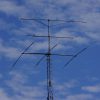Draft ETSI EN 303 446-1 V1.1.0 (2017-03)
“ElectroMagnetic Compatibility (EMC) standard for combined and/or integrated radio and non-radio equipment; Part 1: Requirements for equipment intended to be used in residential, commercial and light industry locations; Harmonised Standard covering the essential requirements of article 3.1(b) of Directive 2014/53/EU”
Background:
This future RED harmonised standard is based on the principles given in ETSI EG 203 367 “Guide to the application of harmonised standards covering articles 3.1b and 3.2 of the Directive 2014/53/EU (RED) to multi-radio and combined radio and non-radio equipment”.
Scope:
This standard defines requirements in respect of ElectroMagnetic Compatibility (EMC) under article 3.1(b) of Directive 2014/53/EU for combined and/or integrated equipment intended to be used within residential, commercial and light industry locations.
The present document is only applicable to combined and/or integrated equipment where:
- the radio function is within the scope of one or more of the standards listed in clause 2.1.1 of the standard, (eg ETSI EN 301 489-1), and
- the non-radio function is within the scope of one or more of the standards listed in clause 2.1.2 of the standard, (eg EN 61000-6-1 and EN 55011).
Basic EMC requirements
At least one configuration of typical intended use shall be tested with both non-radio and radio functions operating at the same time.
The configuration of the EUT should be established in order to:
- maximize the emissions of the EUT;
- ensure the EUT is most susceptible;
- be typical of the intended use.
Schedule for publication as a harmonised standard (under the RED):
- Publication 2017-12-18
- Citation in the OJ 2018-04-02








